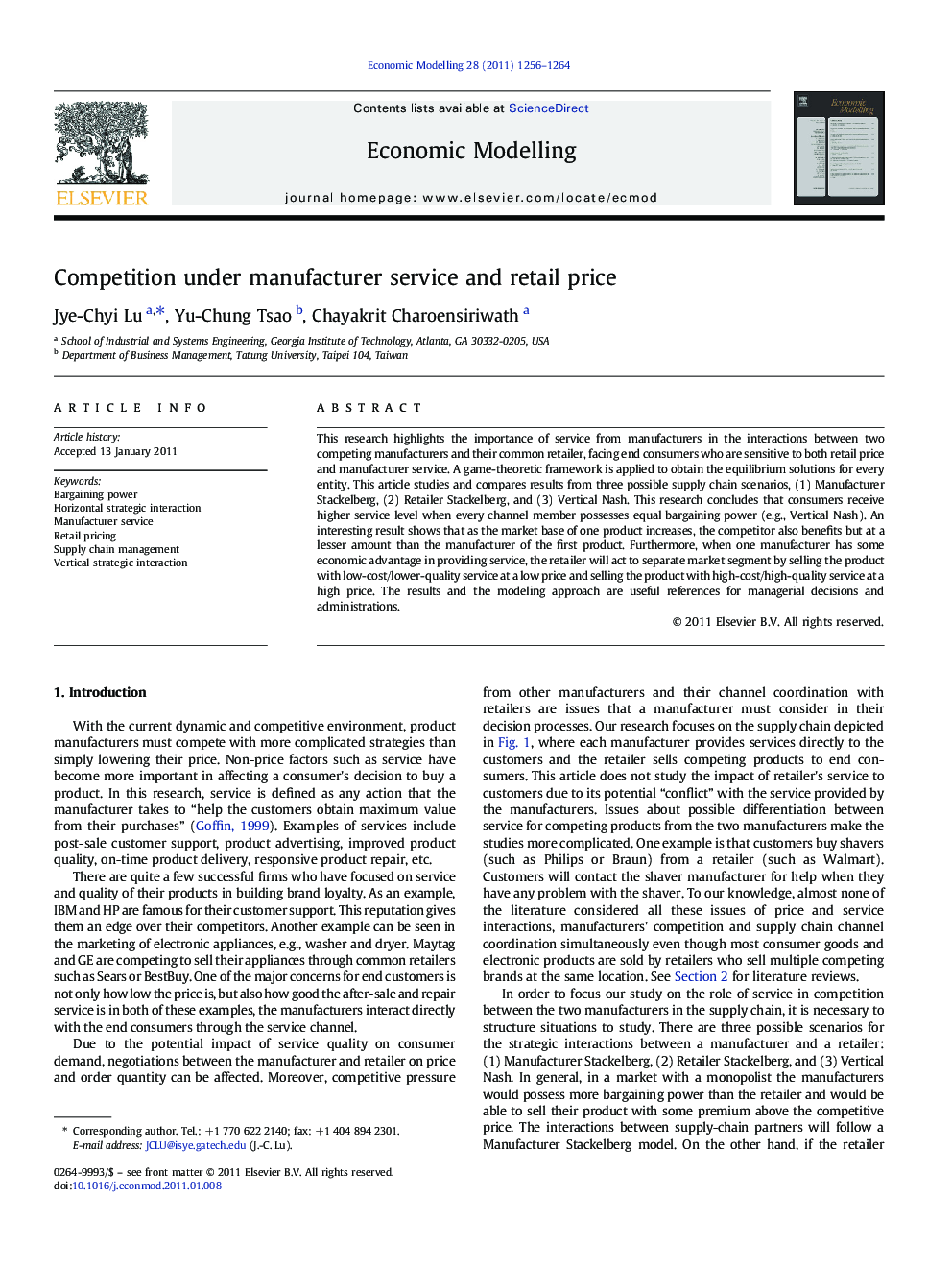| Article ID | Journal | Published Year | Pages | File Type |
|---|---|---|---|---|
| 5055662 | Economic Modelling | 2011 | 9 Pages |
This research highlights the importance of service from manufacturers in the interactions between two competing manufacturers and their common retailer, facing end consumers who are sensitive to both retail price and manufacturer service. A game-theoretic framework is applied to obtain the equilibrium solutions for every entity. This article studies and compares results from three possible supply chain scenarios, (1) Manufacturer Stackelberg, (2) Retailer Stackelberg, and (3) Vertical Nash. This research concludes that consumers receive higher service level when every channel member possesses equal bargaining power (e.g., Vertical Nash). An interesting result shows that as the market base of one product increases, the competitor also benefits but at a lesser amount than the manufacturer of the first product. Furthermore, when one manufacturer has some economic advantage in providing service, the retailer will act to separate market segment by selling the product with low-cost/lower-quality service at a low price and selling the product with high-cost/high-quality service at a high price. The results and the modeling approach are useful references for managerial decisions and administrations.
Research Highlights⺠We model manufacturer competition under manufacturer service and retail price. ⺠Consider Manufacturer Stackelberg, Retailer Stackelberg, and Vertical Nash scenarios. ⺠Derive expressions for equilibrium retail and wholesale prices, and service levels. ⺠Consumers receive higher service level when every one has equal bargaining power. ⺠Results and the modeling approach are useful references for managerial decisions.
